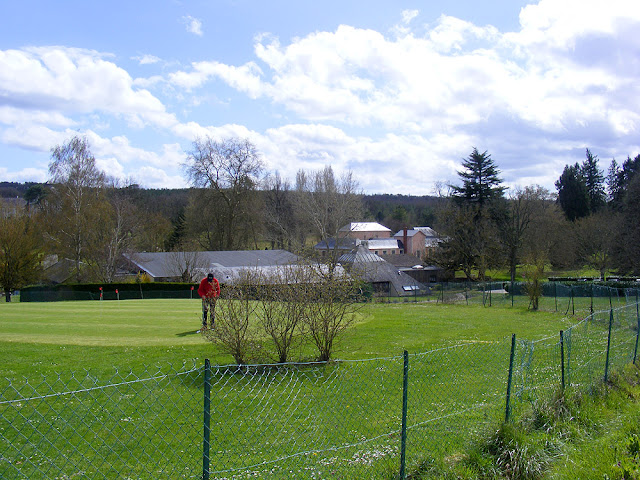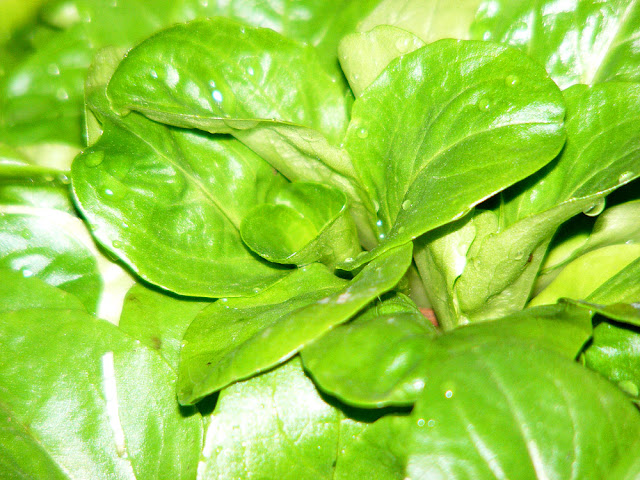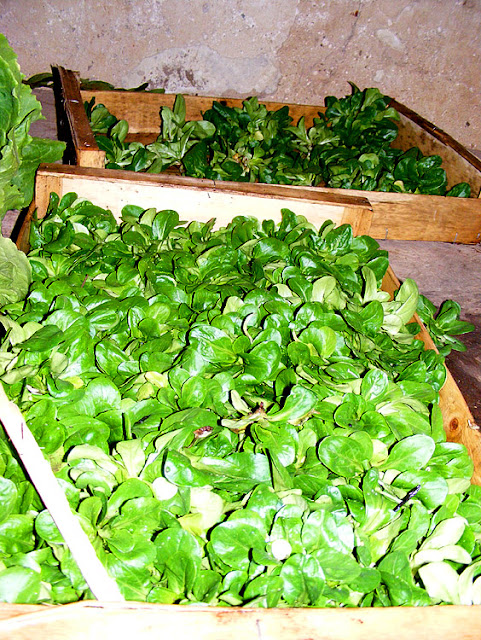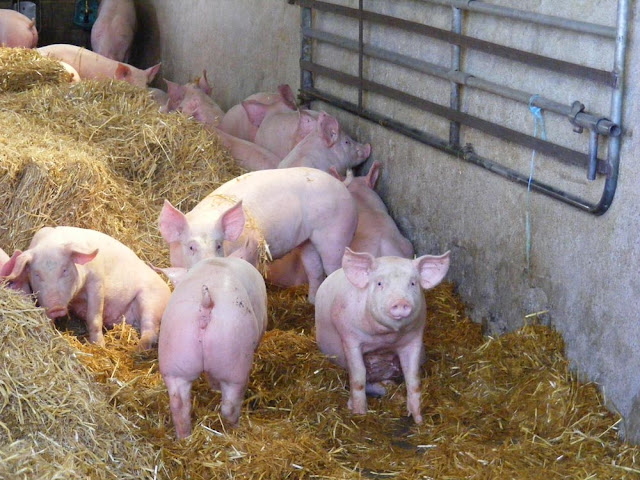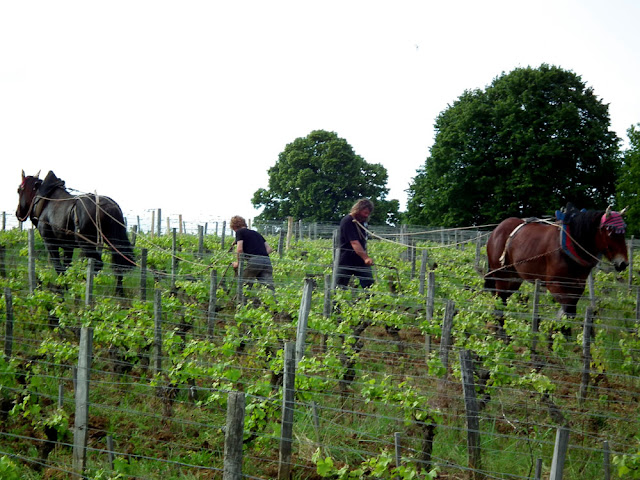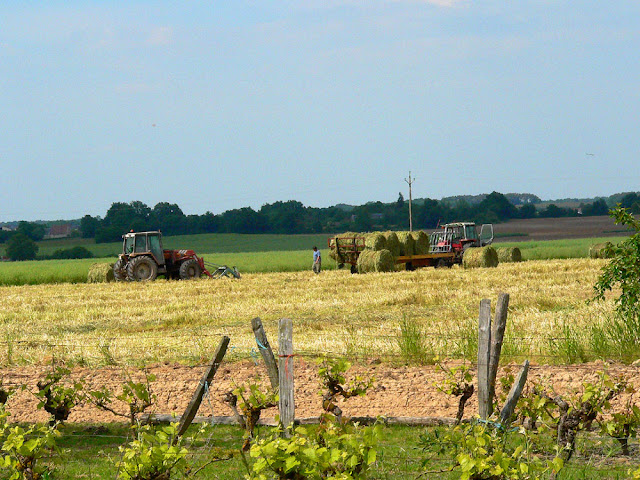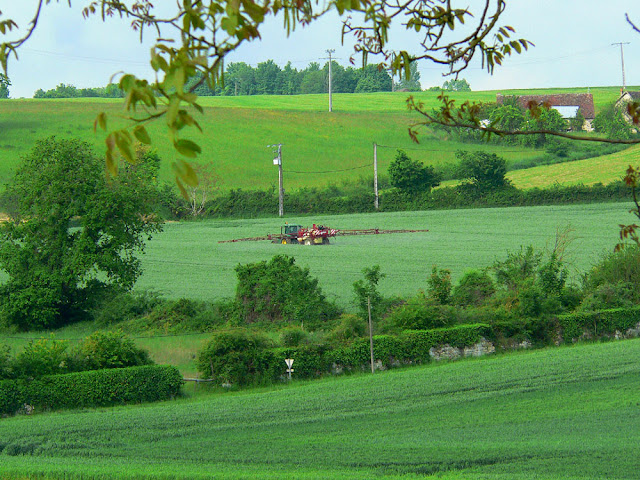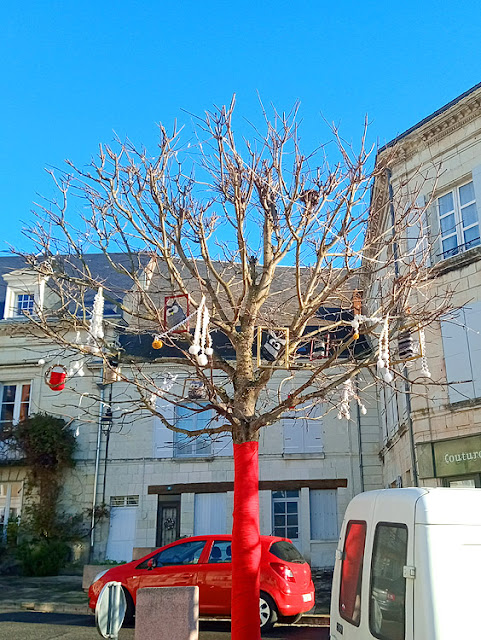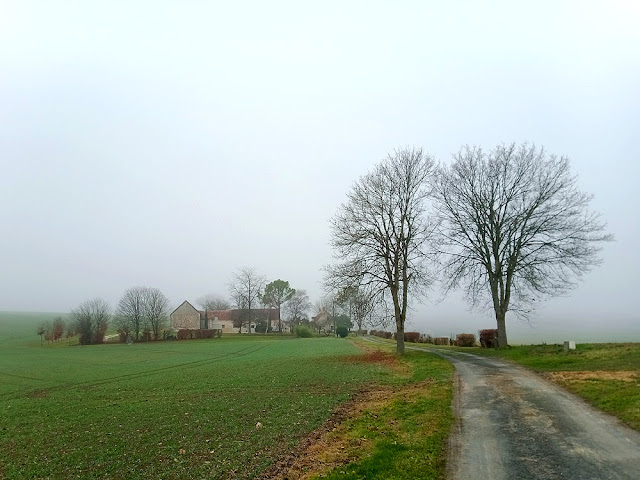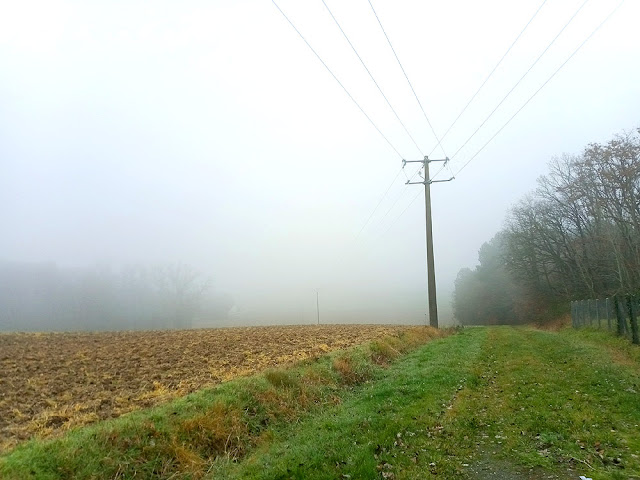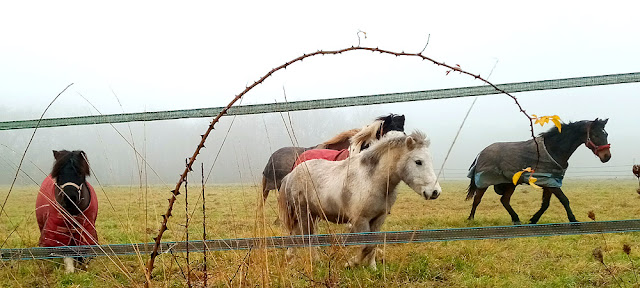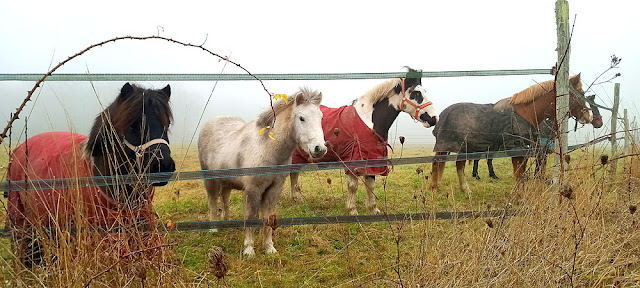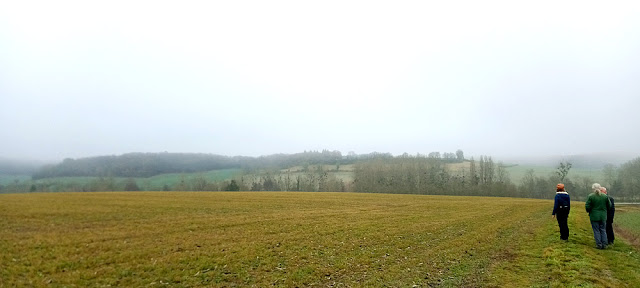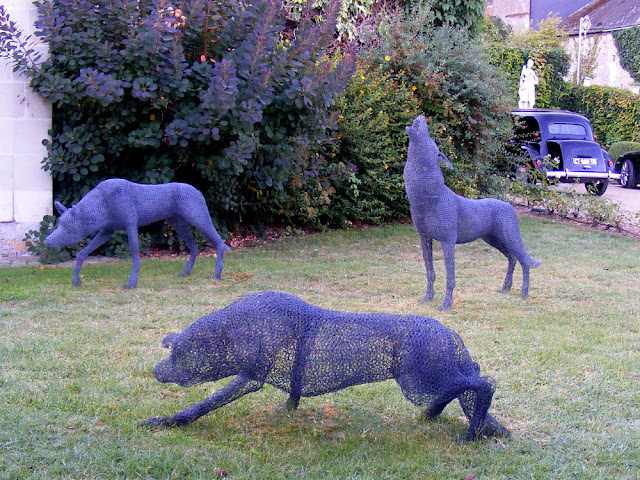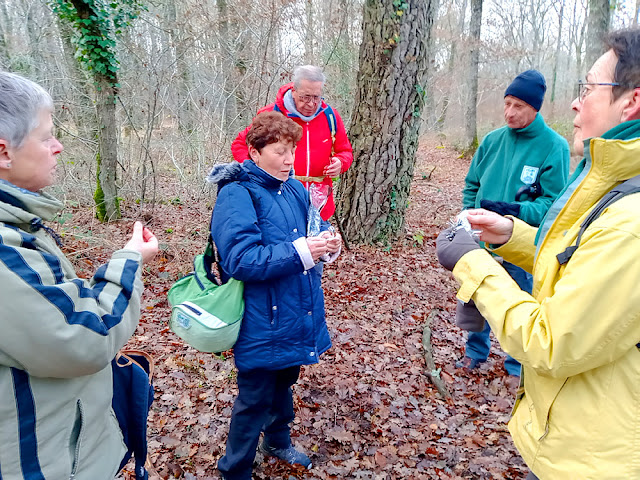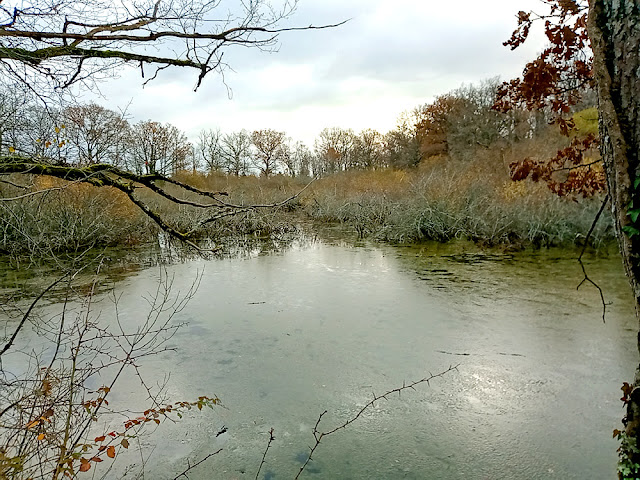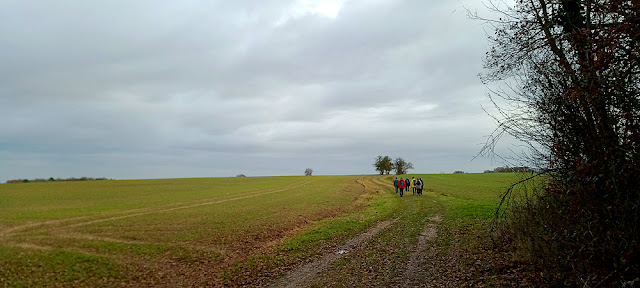Since the recent wolf sighting in Indre et Loire the county archivists have been rummaging in their files and have come up with several accounts from the 18th and 19th century of local incidents involving wolves.
Wolf attacks on humans don't seem to have become a thing until the Middle Ages. The first record of the Little Red Riding Hood story dates from around 1000, in Liege. Prior to this they were regarded as forest animals, rarely seen. The change seems to have come with increasing pressure on their habitat by humans and the increasing presence of humans in their habitat.
 |
Male wolf in Haute Touche Zoo, near us at Azay le Ferron.
|
I thought I'd translate and pass on some of the stories in our local archive.
In 1748 and 1750, somewhat exasperated reports concerning wolf hunting were sent to the Commissioner of Touraine (a State official appointed to enact the King's orders in the Touraine).
"It is only a few days ago, Sir, that I arrived here. I found the whole district extremely frightened of the devastation caused here and in the surrounding area by what the locals call "the Beast".
The lack of success with the drives which have been made up to now is due, according to what I hear, to the fact that the trackers do not go to the meeting point in sufficient numbers, to the fact that they do not go into the woods abreast, but by two or three platoons, to the fact that half of them withdraw after the first drive, and finally to the fact that the guards of the master's office and the horsemen of the Maréchaussée [the French police force at the time] leave their posts at every shot they hear to go and see if some beast other than a wolf has been killed instead.
In order for these drives to succeed, they must be carried out by a large number of assembled men, and above all, there must be people who are knowledgeable about these kinds of things, such as water and forestry officers and the marshal service, without which the result will be a mob of peasants who all jump into a wood at once. They start by making a great noise which makes the animals flee and end up killing a few hares that they take for their supper, without counting the various accidents that can happen to people who are clumsy at shooting and who do not know how to position themselves properly.
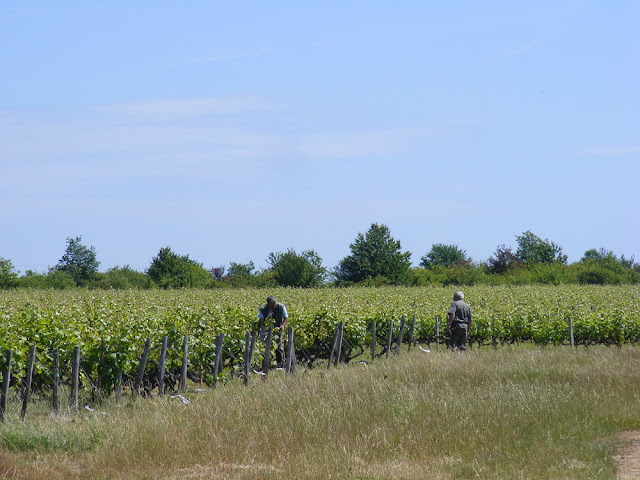 |
Vineyard at Rochecorbon.
|
Yesterday again, two animals, having come in broad daylight to the edge of the levee at the entrance to the village of Rochecorbon, were pursued and surrounded by 400 peasants armed with pitchforks and sticks, who forced the wolves to jump into the river. As one had been wounded on a former occasion so it swam badly, 4 boatmen knocked it into the water with sticks. This cursed species has multiplied for some time and I receive complaints from all sides. They attack people of all ages, and a 45 year old woman was throttled 8 days ago."
In 1750, in Loches: "We had not yet seen in the shire of Loches wolves interested in human flesh. One appeared on December 26 last in the Royal Forest on the road, which injured several people dangerously. The next morning it successively attacked five men among whom was a surgeon who was going to dress the first wounded."
 |
The River Loire in Tours.
|
The attack of a rabid wolf in 1814: In addition to the mutilations caused by the wolves' bites, rabies, transmitted by the animal, was also feared. So a Doctor Leclerc, was called in September 1814 to examine the victims of a rabid wolf in Cravant. This fear of rabies was only alleviated in 1885, by Pasteur's development of a vaccine.
"September 13: first observations.
We, the undersigned Leclerc, doctor of medicine, living in the city of Tours [...] declaring that by virtue of a letter from the Prefect, under the date of September 12, 1814, given to us [...] the notice which was given to him by the Mayor of Isle Bouchard [... ...] in order to send a doctor to the aid of 20 people bitten by a rabid wolf, we went to the district of Isle Bouchard where we arrived on the 13th at four o'clock in the evening.
 |
Royal Forest of Loches.
|
There, in the presence of the Mayor, we asked several people the necessary questions to make sure: 1. of the species of the animal which had bitten people; 2. of the signs or symptoms which could confirm to us that it had rabies; 3. that they were the first people who had been bitten, the day, the hour; if they had been with or without clothing; and 4. what the sex of the animal might be.
All the information taken, one assured us that the animal was a wolf without one being able to indicate its sex; that it threw itself with an extreme speed and an uncommon fury, of preference to the face of the people sometimes by opening the mouth wide, sticking its tongue out, without having inflamed gums nor the foaming mouth. That of the remainder it did not offer any sign which can make it really look like rabies, that it started its ravages on some unhappy peasants of the municipality of Cravant, that it had directed itself thereafter towards the narrow valleys of Panzoult, that after having bitten eight people, it had assuaged its fury on 2 or 3 individuals of the municipality of Villaine close to Azay le Rideau where it was killed by two woodcutters at the time when it was preparing to launch itself onto them.
 |
| Loches. |
September 14 and 15: examination and care of the victims.
At eight o'clock in the morning, on the 14th, accompanied by the Mayors of Ile-Bouchard and Panzoult, the priest at Panzoult, and the surgeons Le Blanc and Brotier, very distinguished and enlightened men who, moreover, deserve the greatest praise for the prompt and assiduous care they have given to the victims of Panzoult, we went to the homes of the eight people of this municipality who had been bitten, and we examined them.
 |
Fields near Panzoult.
|
The wounded having all been cauterised with fire or silver nitrate, ammonia, or a solution of antimony butter [antimony trichloride, a metallic compound soluble in alcohol, often used for cauterising at the time] in the days of the 11th, 12th, 13th, and returned the same day to the hospital by the assiduous care of the Prefect. All of them were treated again on the 15th and the 16th at the time of our departure. All of them are also treated with suppurative ointment, mercurial frictions [an ointment more famously used for venerial disease], ammonia vesications [a treatment that causes blisters], and antimony butter. The wounds are generally in very good condition. Suppuration is well established. All are more or less equally calm; thirst and appetite follow one another, only the widow Moron had a bout of fever on the 14th and 15th; but remission on the 16th in the morning, sweating during the night. All the drinks were reduced to simple sudorifics [sweat inducing], or combined with ammonia, theriac wine [an ancient and widespread cure-all and antidote concocted by apothecaries from at least the 1st century], and bowls of antispasmodics.
September 16: Examination of the wolf.
The animal that we recognised on the 16th in the morning, at the sub-prefecture, having been brought there by the order of the sub-prefect, was indeed a she-wolf of about two years and a half, not having yet had young; rather strong, thin, having besides the red gums as inflamed; this animal was recognised by 3 of its victims that we made come from the hospital to ensure it was really the one which had bitten them; they remained of agreement that it was indeed the one; which fully confirmed its death; and that it was not any more to be feared."

